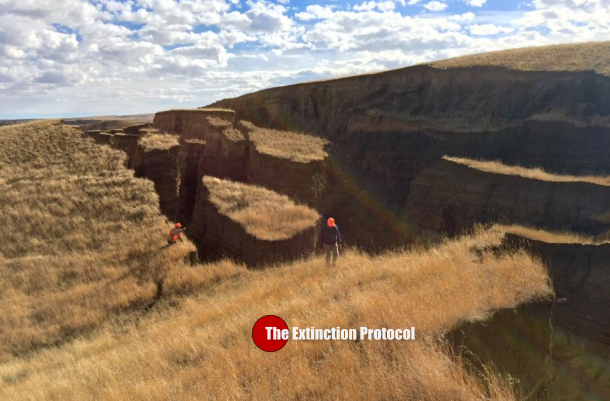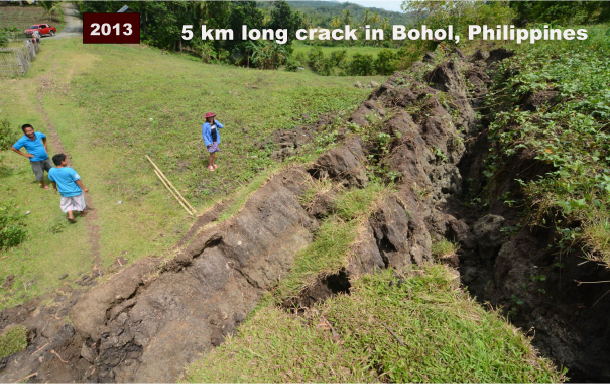-
Recent Posts
- 2020 Bizarre Weather: Could two hurricanes collide? Here’s what may happen if Laura and Marco meet up in the Gulf
- 2020 Bizarre Weather: Six waterspouts filmed swirling at once in Gulf of Mexico
- Space Watch: Asteroid predicted to pass close to Earth the day before the presidential election
- On Aug 16, a car-sized asteroid flew within 2,000 miles of Earth, the closest ever recorded, and NASA missed it
- 500 Wildfires Raging: Three California wildfires now rank among largest in state’s history, and they are still growing
Facebook
Donate – Support the site

-
Join 12K other subscribers
EP: Live Twitter Feed
Tweets by ExtinctionpArchives
- August 2020
- July 2020
- June 2020
- May 2020
- April 2020
- March 2020
- February 2020
- February 2017
- November 2016
- October 2016
- September 2016
- August 2016
- July 2016
- June 2016
- May 2016
- April 2016
- February 2016
- January 2016
- December 2015
- November 2015
- October 2015
- September 2015
- August 2015
- July 2015
- June 2015
- May 2015
- April 2015
- March 2015
- February 2015
- January 2015
- November 2014
- October 2014
- September 2014
- August 2014
- July 2014
- June 2014
- May 2014
- April 2014
- March 2014
- February 2014
- January 2014
- December 2013
- November 2013
- October 2013
- September 2013
- August 2013
- July 2013
- June 2013
- May 2013
- April 2013
- March 2013
- February 2013
- January 2013
- December 2012
- November 2012
- October 2012
- September 2012
- August 2012
- July 2012
- June 2012
- May 2012
- April 2012
- March 2012
- February 2012
- January 2012
- December 2011
- November 2011
- October 2011
- September 2011
- August 2011
- July 2011
- June 2011
- May 2011
- April 2011
- March 2011
- February 2011
- January 2011
- December 2010
Categories
- * Publisher Coupon Discount
- 1 Submit story
- 11:11 signature encoded
- 2012
- Acquatic Ecosystem crash
- Animal Extinction
- Apostasy
- Avalanche
- Black hole or supernova
- Black Swan Event
- Blizzard
- Breaking News Event
- Catastrophic Insurance losses mount
- Celebrities and the Apocalypse
- Chemical explosion
- Chemical Pollution
- Civilizations unraveling
- Climate unraveling
- Cloudburst storms with flashflooding
- Coal Seam Fire
- Comets
- Commentary
- Cosmic and Gamma Ray emissions
- Cracks
- Crowd Control technology
- Cryometeor
- Cyber Warfare
- Cyclone or Hurricane
- Dark Ages
- Deep Focus earthquake
- Deluge from torrential rains
- Derecho storm
- Derecho storm system
- Desertification
- Disappearing Lakes
- Disaster-related suicides
- Disease outbreak
- Dormant fault activation
- Dream Portal TEP
- Drought
- Drumbeat of War
- Dust Storm
- Earth Changes
- Earth Watch
- Earth's core dynamics
- Earthquake Omens?
- Eclipse
- Ecology overturn
- Economic upheaval, social unrest, terrorism
- Ecoystem crisis due to population boom
- Editor's note to readers – policy
- El Nino Effect
- Electric power disruption & grid failure
- Electronic Surveillence
- Emerging disease threat
- Environmental Threat
- Erratic Jet Stream
- Ethnic or religious strife
- Extinction Protocol Exclusive Editorial
- Extinction Threat
- Extreme Weather Event
- Famine Threat
- Financial System Collapse
- Fireballs
- Fireballs, Meteor or Asteroid
- Flooding
- Food chain unraveling
- Forecast book quotation
- Fracking quake suspected
- Frost Quakes
- Fungus outbreak
- Future coding
- Futuristic tech trends
- Gale-force winds and gusts
- Geomagnetic Storm Alert
- Geyser eruption
- Giant Earth Crack
- Glacial fracture
- Glacial Melt
- Global Debt Bomb
- Ground inflation
- Hailstorm
- Harmonic tremor swarm
- Hazardous chemical exposure
- Health guideliness issued
- Heatwave
- Helium Seepage
- High-risk potential hazard zone
- Hum noise
- Human behavioral change after disaster
- Human Migration
- Ice Storm
- Infrastructure collapse
- Invasive species threat
- Islands sinking
- Lack of snow
- Land fissures
- Land fissures, cracks, sinkholes
- Landslide & geological deformation
- Lava flow
- Lightning storm
- Limnic overturn
- Lithosphere collapse & fisssure
- Lurid acts of violence increasing
- Magma Plume activity
- Magnetic pole migration
- Marine animal strandings
- Martial Law
- Mass animal deaths
- Meteor or Asteroid
- Methane Seepage
- Monthly lead post
- Mud volcano
- Mudslide
- Mystery Boom & Shaking
- Natural gas explosion
- New Book
- New land rises from sea
- New virus reported
- New volcanic activity
- New weapons of war
- New World Order -Dystopia- War
- Nuclear plant crisis
- Ocean overturn
- Ozone Hole
- Pack Animal Aggression
- Pest Explosions
- Pestilence Watch
- Planetary discovery
- Planetary Tremor Event
- Polar Vortex
- Poleshift risks
- Pollution and Waste
- Potential Earthchange hotspot
- Prophecies referenced
- Quarantine
- Radiation leak or contamination
- Rare snowfall
- Reality Check
- Record Cold temperatures
- Record high temperatures
- Record rainfall
- Record snowfall
- Red Tide
- Resource war
- Rising tension between nations
- Rumors of War
- Scientific blunders
- Seismic tremors
- Signs of Magnetic Field weakening
- sinkholes
- Social unrest
- Solar Event
- Space Watch
- Strange high tides & freak waves
- Strange unexplained noises
- Subglacial flood event
- Submarine volcanic eruption
- Submarine Volcano
- Supermoon
- Supervolcano News
- Tectonic plate movement
- Time – Event Acceleration
- Time Portals
- Tornado Outbreak
- Tsunami
- Unknown phenomena in the sky
- Unprecedented Flooding
- Unseasonable Weather Event
- Unsolved Mystery
- Unusual hail storm
- Unusual solar behavior
- Ususual animal behavior for disaster
- Volcanic Ash
- Volcanic Eruption
- Volcanic gas emissions
- Volcano unrest
- Volcano Watch
- Water Crisis – Conflict
- Wildfires
Books by the Author
News website
Support
Youtube Channel
Massive crack 7 football fields long open up in Wyoming mountain range
This entry was posted in Civilizations unraveling, Earth Changes, Earth Watch, Earthquake Omens?, High-risk potential hazard zone, Land fissures, Land fissures, cracks, sinkholes, Lithosphere collapse & fisssure, Potential Earthchange hotspot, Time - Event Acceleration, Unsolved Mystery. Bookmark the permalink.
















And if you just past the person walking from the crack/gash, over his left shoulder, it appears there is a rainbow?
LikeLike
So many rainbows in past few years. Unfortunately, they are not a harbinger of goodness. It appears that Fukushima rads in the atmosphere (and probably a one-two punch of Chemtrails interacting with it) have created more and more “Chembows”.
LikeLike
Wow, good observation on your part Dennis E! Btw- At first I was looking at the sky for the said rainbow you had mentioned. But then I finally realized that the rainbow is actually located along the rock wall instead. (Haha)
LikeLike
Rainbow, a sign that the world will never be destroyed again by water.
LikeLike
Maybe the earth is expanding?
LikeLike
More likely deconstructing – in preparation for the recreation of a new one.
“And I saw a new heaven and a new earth: for the first heaven and the first earth were passed away; and there was no more sea.” -Revelation 21:1
Going forward, nothing should surprise us anymore…even the possible tearing of the fabric of space-time as the change intensifies enroute to the new creation.
“And he sware by Him that liveth forever and ever…that there should be time no longer.” -Revelation 10:6
LikeLiked by 1 person
The egg is cracking
LikeLike
Yes, it is. You can’t make an omelet without cracking a few eggs.
LikeLike
And the one in Arizona, west of flagstaff, you reported on on March 25, 2013
LikeLike